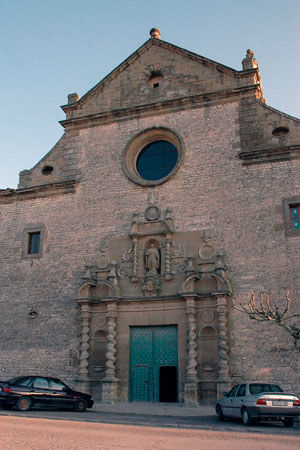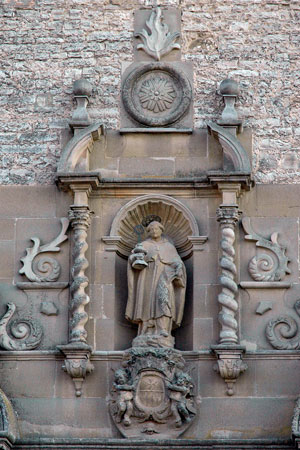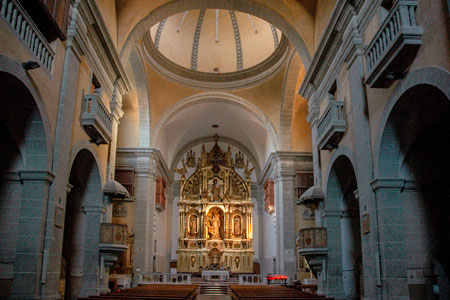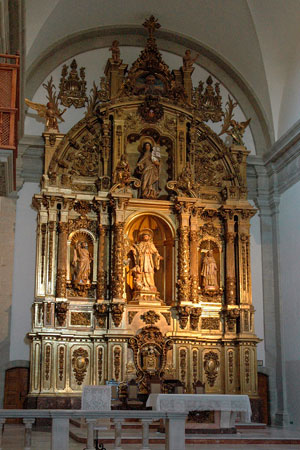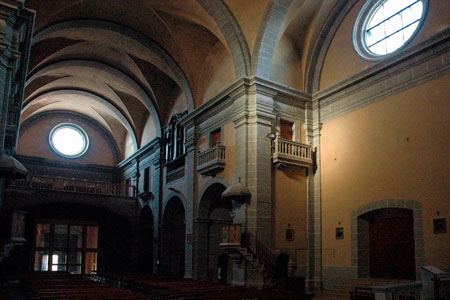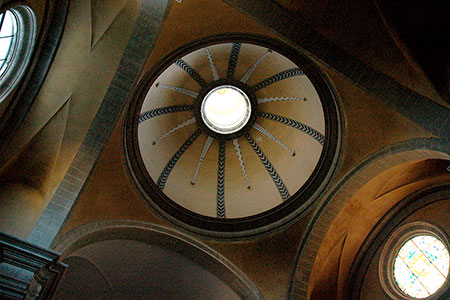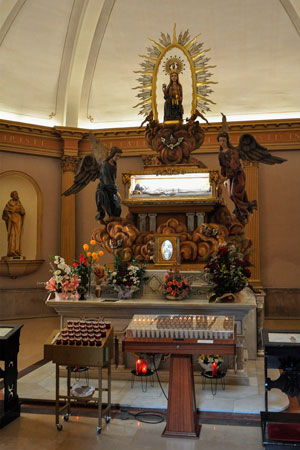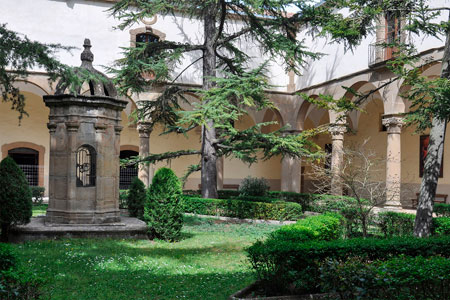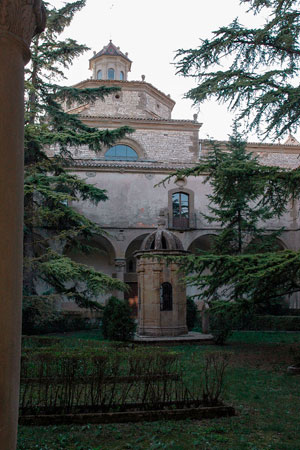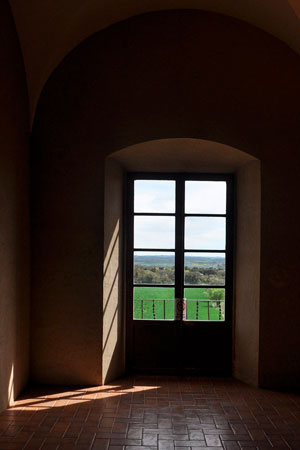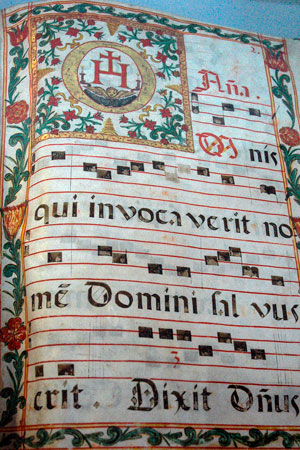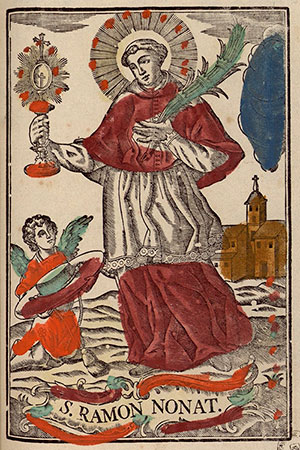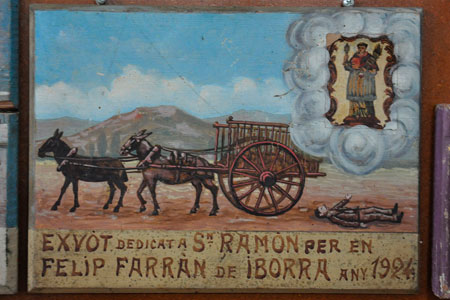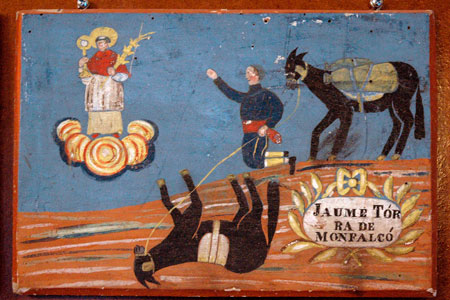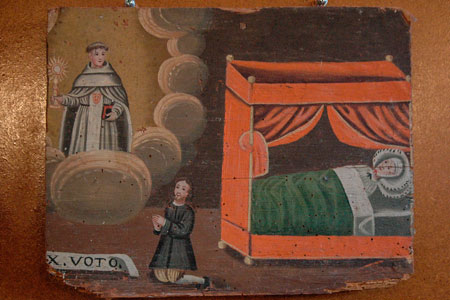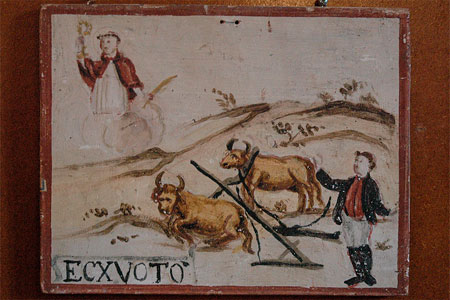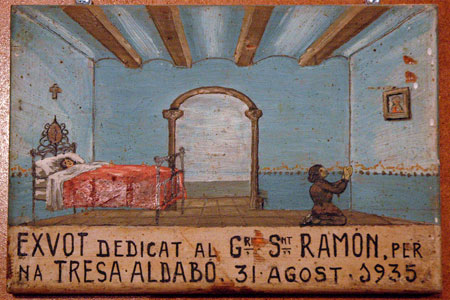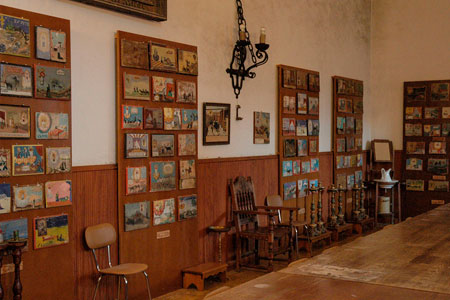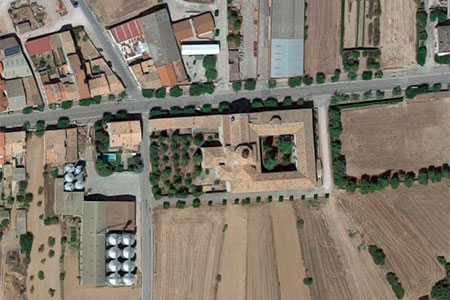Convent of Sant Ramon de Portell
Sant Nicolau de Portell / Sanctuary of Saint Ramon
(Sant Ramon, Segarra)
According to tradition, the convent of Sant Ramon del Portell was founded around 1245 at the former church of Sant Nicolau de Portell, on the initiative of Saint Peter Nolasco, founder of the Mercedarian Order. However, it is not until the mid-15th century that the first documentary references to its existence appear. From the early 16th century onward, it became known under the invocation of Saint Raymond, as it housed the saint’s remains, which contributed to its recognition as an important site of popular devotion.
The convent was expanded between the 16th and 17th centuries, with records mentioning the years 1597 and 1625. Later, in 1675, under the initiative of Pedro Salazar, construction began on the current large building, and it gained independence from the convent of La Mercè in Barcelona, upon which it had depended until then. After being looted during the Peninsular War, the Mercedarian community left the convent in 1835, but returned in 1897, and remains there to this day. The church also serves as the parish church for the village of Sant Ramon de Portell.
The façade features a Baroque portal, started in 1674 and completed in 1722. Between the Solomonic columns on each side are niches that once contained images of Saint Peter Nolasco and Our Lady of Succour, both lost in 1936. The image of Saint Raymond, above the door, has been preserved. The church is a notable example of Baroque architecture, with considerable dimensions. The grand main altarpiece, a remarkable Baroque work by Pere Costa, was destroyed in 1936. Behind the presbytery, a corridor leads to the old cambril (shrine), where the saint’s remains were kept until 1936. Today, the relics that remain are housed in the new cambril, near the right transept.
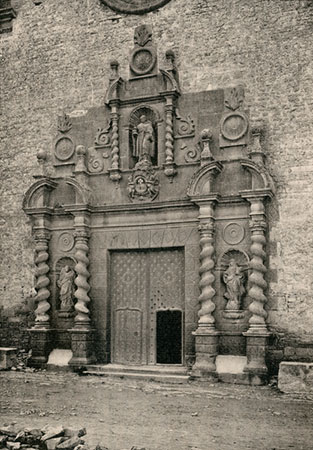
The complete Baroque portal
Photo of Gaietà Barraquer from 1904,
published in Las casas de religiosos...
The cloister, also large in size, was begun at the start of the 19th century, with the year 1802 inscribed, though in 1835 it was still unfinished. The convent had a valuable library, which has almost completely disappeared. According to historian Barraquer, in 1835, during the disentailment, the books were transferred: “...it was taken from its place and brought to Cervera, filling several carts; from which volumes did not cease to fall along the way.” Some choir books were recovered in 1940 and are still preserved.
The figure of Saint Raymond Nonnatus is closely linked to this Mercedarian convent. According to tradition, he was born in Portell at the end of the 12th century. The legend tells that it was Viscount Ramon Folc I of Cardona who, with his sword, opened the womb of the saint’s mother—who had died before giving birth—to extract the infant. From this event comes the name “Nonnatus” (meaning “not born”) by which he is known. Raymond is said to have died in Cardona, and tradition holds that to determine his burial site, his body was placed on a blind donkey, which walked straight to the chapel of Sant Nicolau de Portell, where the animal collapsed and died. There was no doubt.
Another version of the tradition states that he was born in the year 1300 and joined the Mercedarian Order, where he is especially venerated. After his death in 1345, his cult became centred in Sant Nicolau de Portell, where he had been buried, and later spread more widely. However, some scholars believe he may not have been a historical figure. His cult was not officially recognised until 1628.
- BARRAQUER Y ROVIRALTA, Cayetano (1906). Las casas de religiosos en Cataluña durante el primer tercio del siglo XIX. Vol. 1. Barcelona: Imp. Fco. J. Altés
- MILLÁN, Joaquín (2020). San Ramón y su santuario. Manifestación del poder de Dios. San Ramón: I. P. Gazulla


